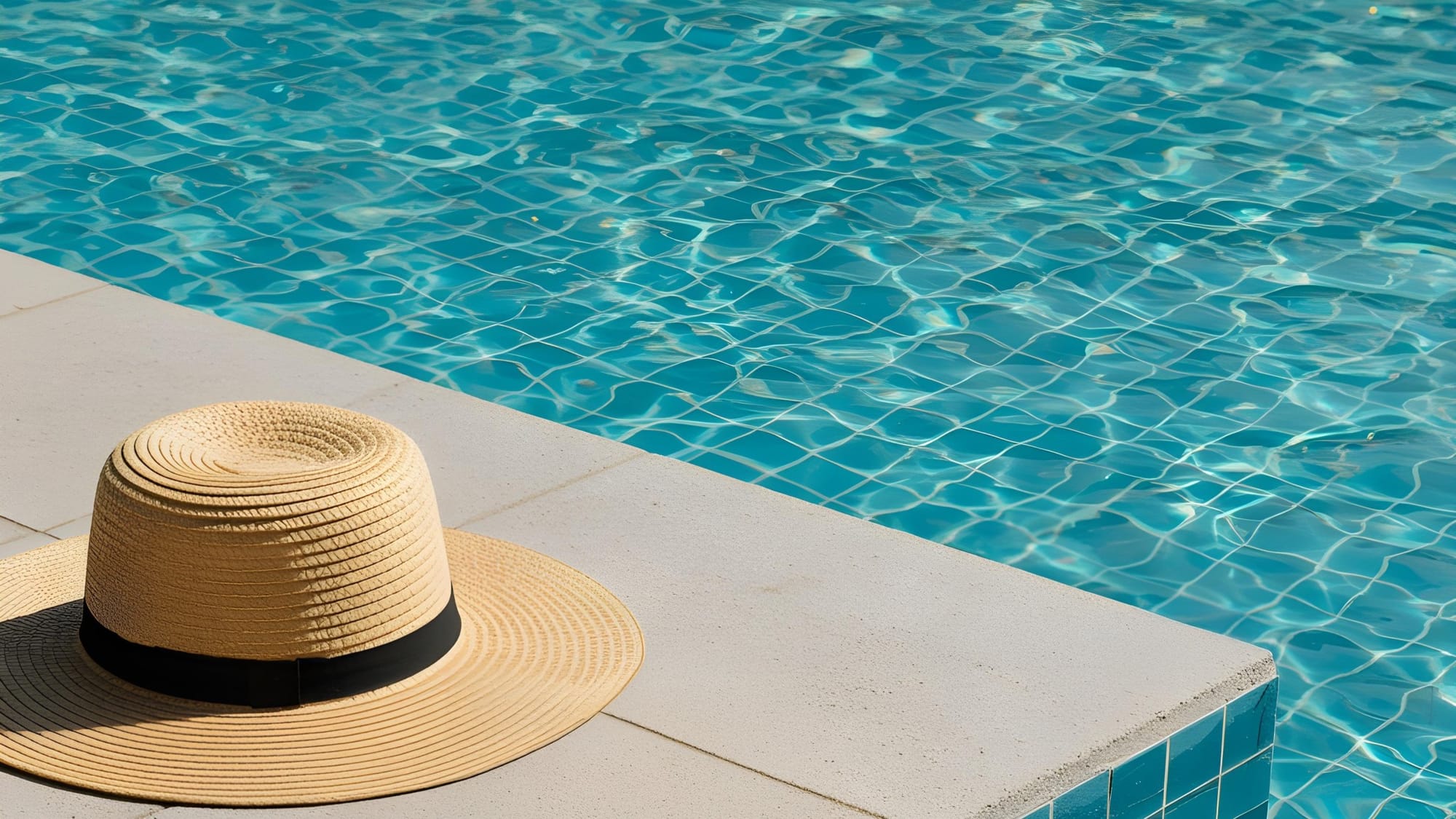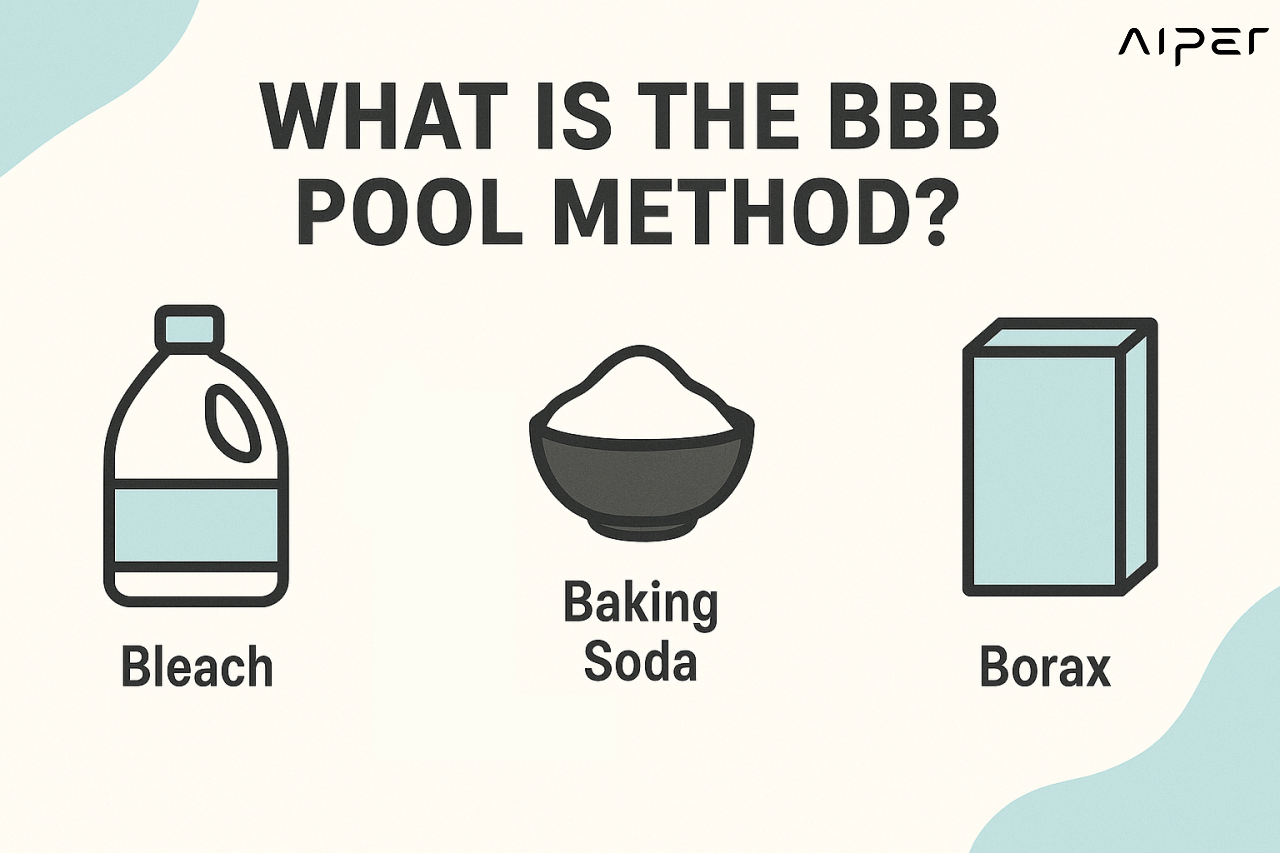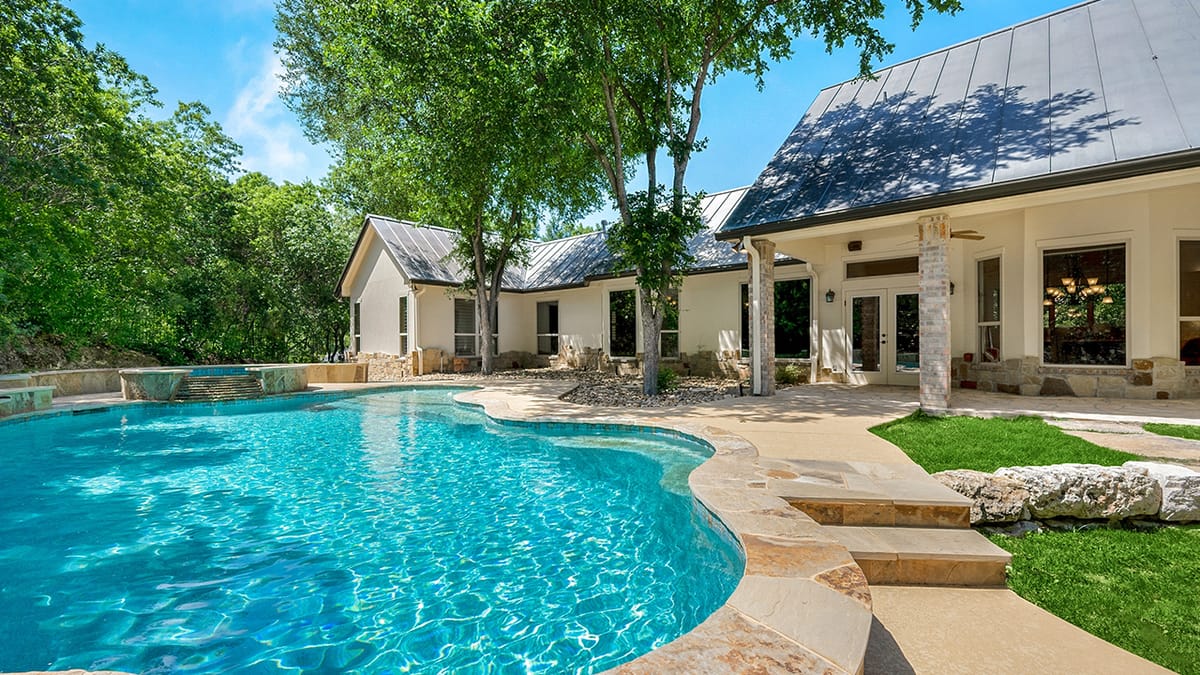The BBB Pool Method: A Cost-Effective Way to Keep Your Pool Sparkling Clean

Are you tired of spending a fortune on pool chemicals? The BBB pool method might be your solution. But what is the BBB pool method? As a pool owner, you know pool maintenance is such a hassle. You might be surprised by the cost-effective pool care, which is often just DIY pool maintenance, further saving you money and making pool care easier.
What is the BBB pool method (Bleach, Baking Soda, Borax)? It's a cost-effective pool care alternative to commercial pool care. Which is nothing but household items, so you won't expose yourself to harsh chemicals. Let's dive into how the BBB pool method works and how it can transform your pool maintenance routine.
What Is the BBB Pool Method?
The BBB pool method is a cost-effective method to clean out pools and algae and kill micro-organisms that might grow in your pool. Yes, you can buy expensive products from stores for about $15. On the other hand, 5 pounds of baking soda will cost you $3. You might wonder what the BBB pool method is? This method is nothing but just pool maintenance with bleach, baking soda, and borax. They are common grocery store items.
BBB pool method stands for Bleach, Baking soda, and Borax.
- Bleach, which is a chlorine sanitizer used to kill microorganisms, algae, and raise the chlorine levels of the pool to keep it clean.
- Baking soda acts as an alkalinity adjuster in the BBB pool method, which helps protect plastic and vinyl, as low alkalinity can damage pumps and heaters. It is gentle on skin and prevents skin and eye irritations.
- Borax, in combination with bleach, baking soda, and borax, is used in pool maintenance to act as a pH buffer, inhibiting the growth of algae, and serves as a cleaning agent.

Why Choose the BBB Method for Pool Maintenance?
Whenever people think about DIY pool maintenance, they are always worried about their pool getting ruined. There are misconceptions about using bleach in your swimming pool as a sanitizer. This will not turn your pool plaster yellow, nor will it create Ammonia and create cloudy water. It is the exact same thing as liquid chlorine sold by pool service companies but just in weaker form.
When you want to think of pool care, you always start to count numbers because commercially sold pool care products are expensive; however, the BBB pool method is cost-effective pool care. When adding pool chemicals to your pool, you run the risk of misbalancing the chemistry because they contain harsh and strong chemicals that can cause skin irritation.
Because of this DIY pool maintenance method, you tend to lower the risk of exposing yourself to harsh chemicals which has the double benefit of irrigating your skin less and it helps the environment as well. You might think that this cost-effective pool care doesn't work for my pool. It works for every pool, it doesn't matter if you have in-ground or above-ground pools, with or without salt water systems.
With the BBB pool method, you save your money and do not have to worry about the water chemistry. But pool cleaning is such hassle because you have to be physically present there. You can save your time and effort by setting up Aiper to do everything for you.
How the BBB Method Works: A Step-by-Step Guide
There are few steps you have to take in the BBB pool method to get your pool cleaned thoroughly. Otherwise, you might run into issues and it would cost you extra time and money to fix them. If you do end up having problems with the BBB pool method then continue reading to see how you can fix them.
Step 1 – Test Your Pool
Before you add anything to your pool, it is crucial that you test the water of your pool first. Because if you don't have a baseline then you tend to over-correct or under-correct.
You can read about our existing blog to learn how to test the pool water. With this just one testing kit, you can test free chlorine and range needs 2-4 ppm (parts per million), pH and range needs 7.2-7.8, total alkalinity and range needs 80-120 ppm, cyanuric acid (CYA) and range needs 30-50 ppm and calcium hardness, range needs 250-400.
Step 2 – Sanitize with Bleach
Bleach (use unscented) which is 6-8.25% sodium hypochlorite you buy from the grocery store is a chlorine source which is identical to pool store liquid and it's cheaper. The formula for bleach is NaOCl. Its reaction with water goes as:
NaOCl + H₂O → HOCl + Na⁺ + OH⁻HOCl
When you pump water, electricity is used, and Cl2 is formed, which is known as free chlorine. If you add a gallon of 8.25% bleach per 10,000 gallons of water, you raise chlorine by 6 ppm. You should add it every day or when it needs maintenance to keep the level at 2-4 ppm. Adjust depending on CYA level.
Step 3 – Balance Alkalinity with Baking Soda
Baking soda, which is sodium bicarbonate (NaCO₂), can raise total alkalinity (TA) of a pool without drastically affecting the pH of the water. Just adding 1.5 pounds of baking soda in 10,000 gallons of water raises TA by 10 ppm. You should dissolve it in a bucket of pool water and then pour it around the pool's edge.
Step 4 – Adjust pH with Borax
You might find on the internet that you can use soda ash instead of borax. But soda ash can increase pH up to 8.4 and TA 200+. So, using borax is much safer and easier. Using borax will also give you sparkling water, algae prevention, and a softer feel of water.
20 oz of borax in 5,000 gallons can raise the pH of water by ~0.2. You should try a pool calculator for accuracy.
Step 5 – Monitor Cyanuric Acid and Shock When Needed
Cyanuric acid (CYA) creates bonds in water with chlorine in water to protect it from the sun's UV rays. Maintain its level at 30-50 ppm.
Shock the pool by raising chlorine to 10-20 ppm; if combined chlorine (CC) is less than 0.5 ppm, then that's fine. If not, then your pool will turn green and algae will form. The only way to lower it is by draining water.
Step 6 – Maintain Physical Cleanliness
The BBB pool method only focuses on the chemistry of the pool; you still have to remove debris. You do it manually. To save time and effort, you can automate it with a robotic pool cleaner. One of the tools you might see is the Aiper Scuba X1 Pro Max, which is cordless. With a new pool cleaner like the Scuba X1 Pro Max, you don't have to worry about suction power because it has 4800 gph suction. It works for all pools.
This way, you don't have to waste your time and efforts because robotic cleaners can do such time-intensive tasks efficiently.
Common Challenges and Solutions with the BBB Method
There are some problems you might face with the BBB pool method. Here's how to fix them:
- Pool water is cloudy: This happens often due to low free chlorine levels in pools or high CYA levels. To know what the issue is, use a testing kit and adjust your methods accordingly.
- Algae growth: Algae grow when there is not enough chlorine in the water to kill microorganisms. This is why maintaining proper chlorine levels is essential. If algae growth persists, use borax for prevention.
- pH of the pool is swinging: If the pH of the water is not balanced, then it is bad for health. You should use baking soda to stabilize TA first. And then add borax based on the results of the water test for pH.
- Cleaning of the pool takes too long: The BBB pool method doesn't take more than 5-10 minutes to make water clean. But there can be debris, which can consume your time a lot. Pairing the BBB method with a robotic cleaner can reduce manual effort, keeping your pool pristine.

Tips for Success with the BBB Pool Method
Here are a few more pool cleaning tips, the BBB method, that would help you get the desired results. Test your water daily to ensure that chlorine levels are at a suitable level, or test every few days for consistent chlorine levels.
Run the pump for 8-12 hours every day; it's for circulation, and it's also included in pool cleaning tips, the BBB method.
Additional pool cleaning tips: The BBB method involves skimming regularly to prevent debris buildup and brushing pool surfaces. You can use an automatic pool skimmer to do this task for you. Always store your chemicals safely and out of direct sunlight, in a dark and superb location. You should never mix them.
Conclusion
The BBB pool method is where you can clear a pool using just household items like bleach, baking soda, and borax, making this cost-effective pool maintenance. The BBB pool method is budget-friendly compared to chemicals from pool stores, and this cost-effective pool maintenance also has fewer harsh chemicals, which is good for your skin and the environment.
You can save money using the BBB pool method and enjoy a hassle-free pool season with just a testing kit, three grocery store items, and proper cleaning of the pool. If you have tried this cost-effective pool maintenance, then you can share what your experience was in the comments or on social media to make people aware of the BBB pool method.
If you want to make your pool care routine even easier, like cleaning pools, water surfaces, and stairs, consider tools like the Aiper Scuba X1 Pro Max to handle all the pool cleaning while you focus on water chemistry. Visit Aiper's website to explore innovative pool solutions.


